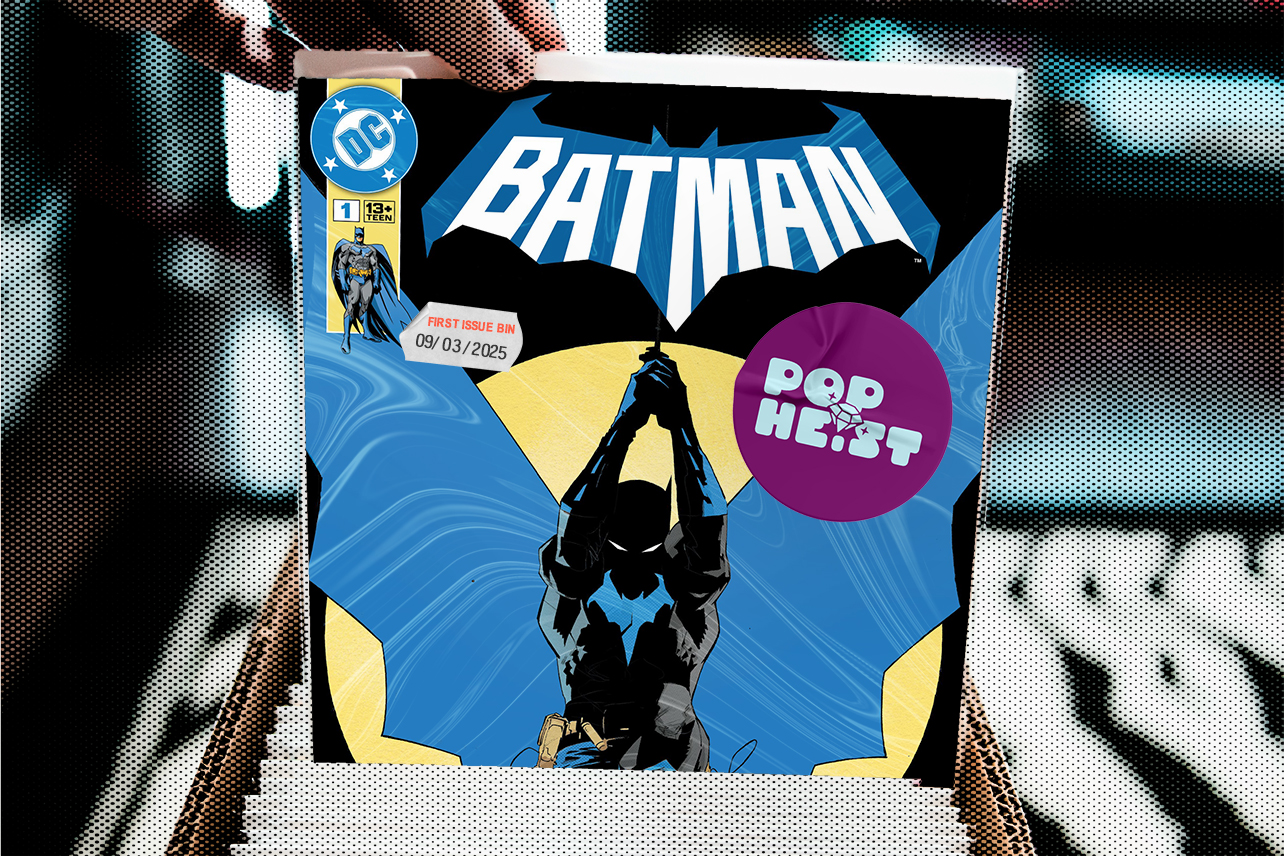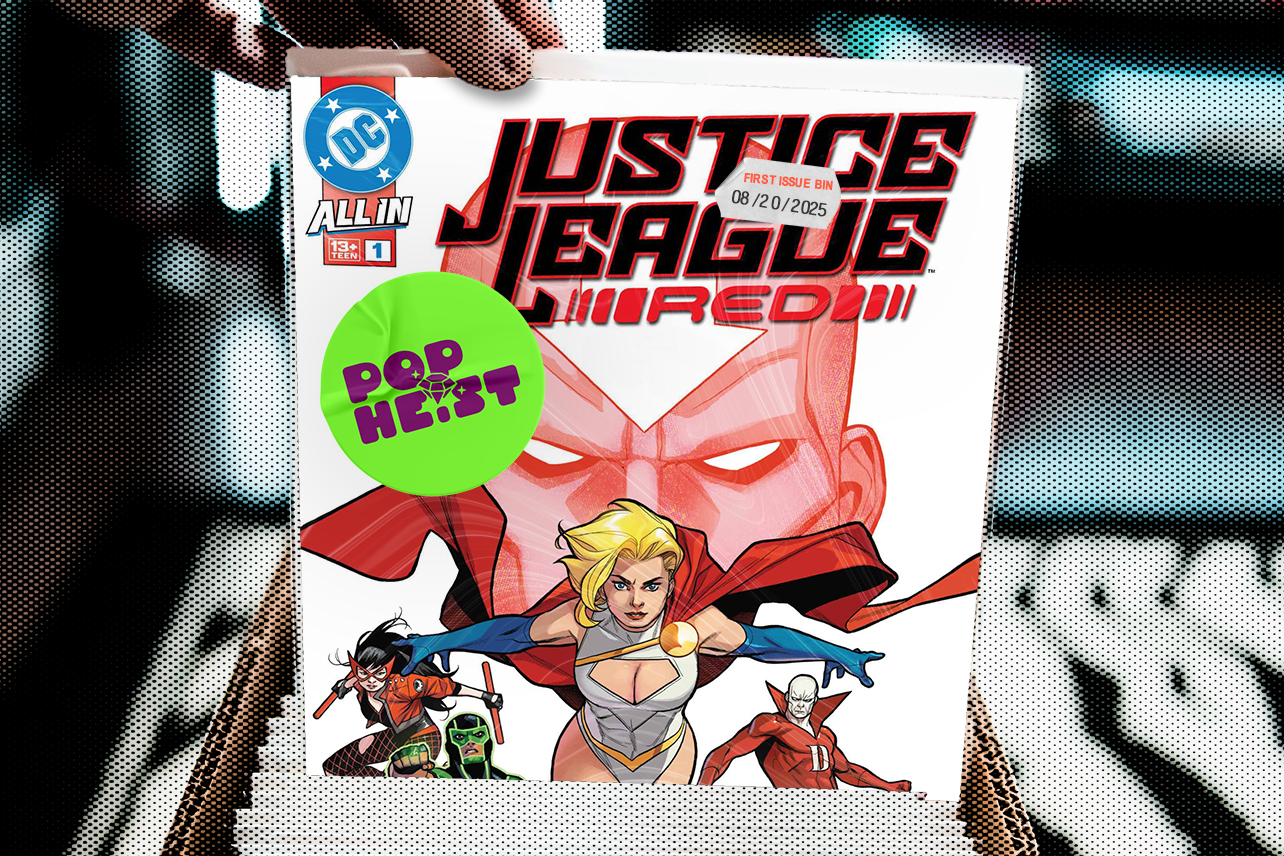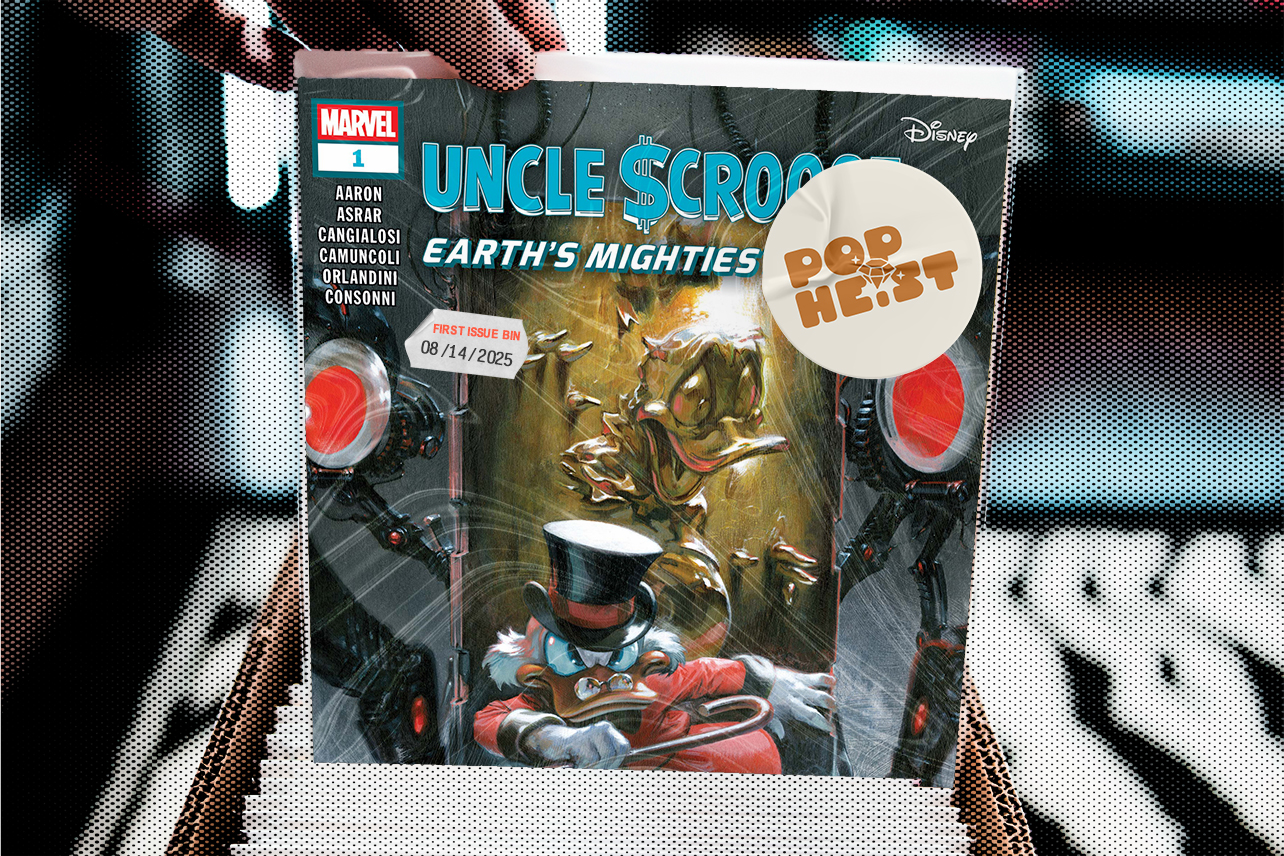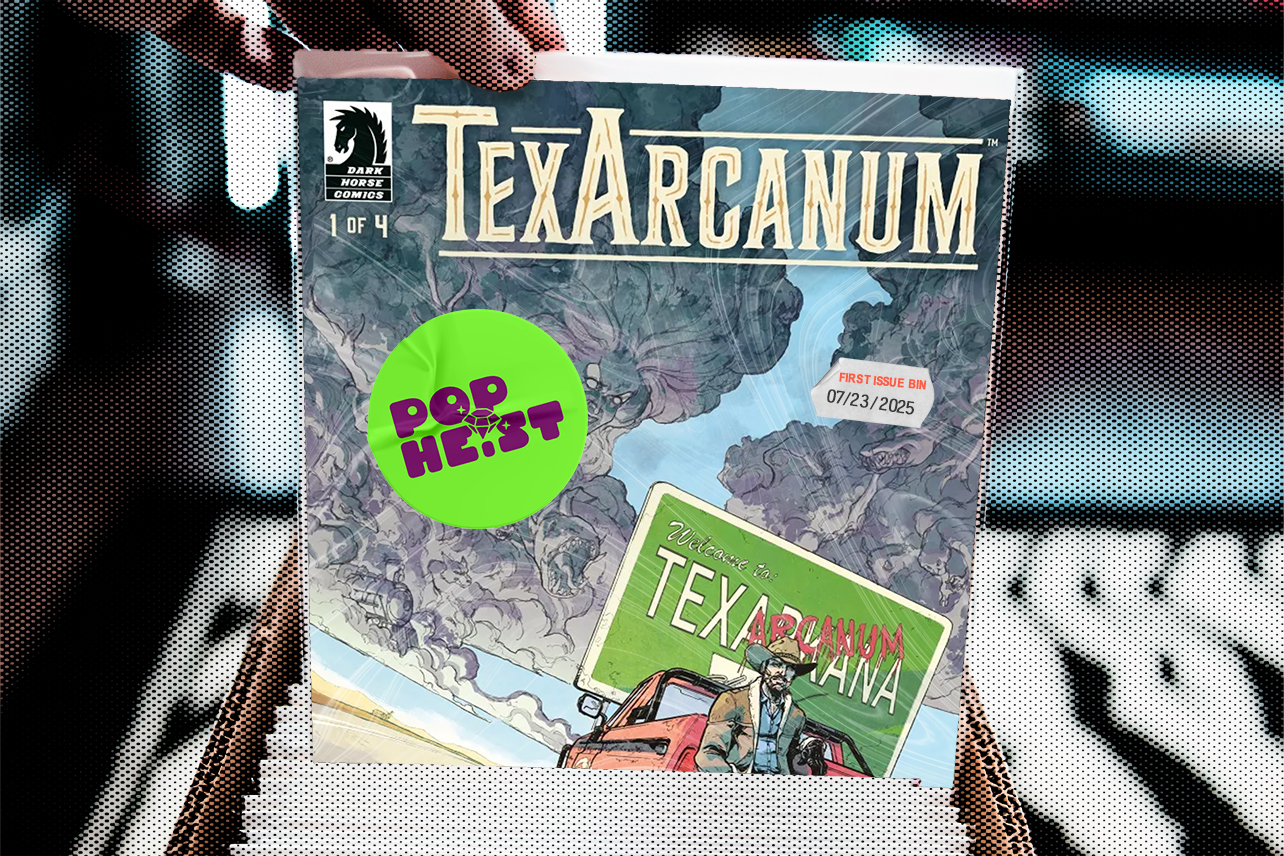Welcome to the First Issue Bin, where I — Ethan Kaye — randomly grab one of this week's comics that’s just starting up and give you the details on whether it should get added to your collection … or remain on the comic shop shelf.
Captain America #1
Writer: Chip Zdarsky
Artist: Valerio Schiti
Color Artist: Frank Martin
Letterer: VC's Joe Caramagna
Editor: Alanna Smith
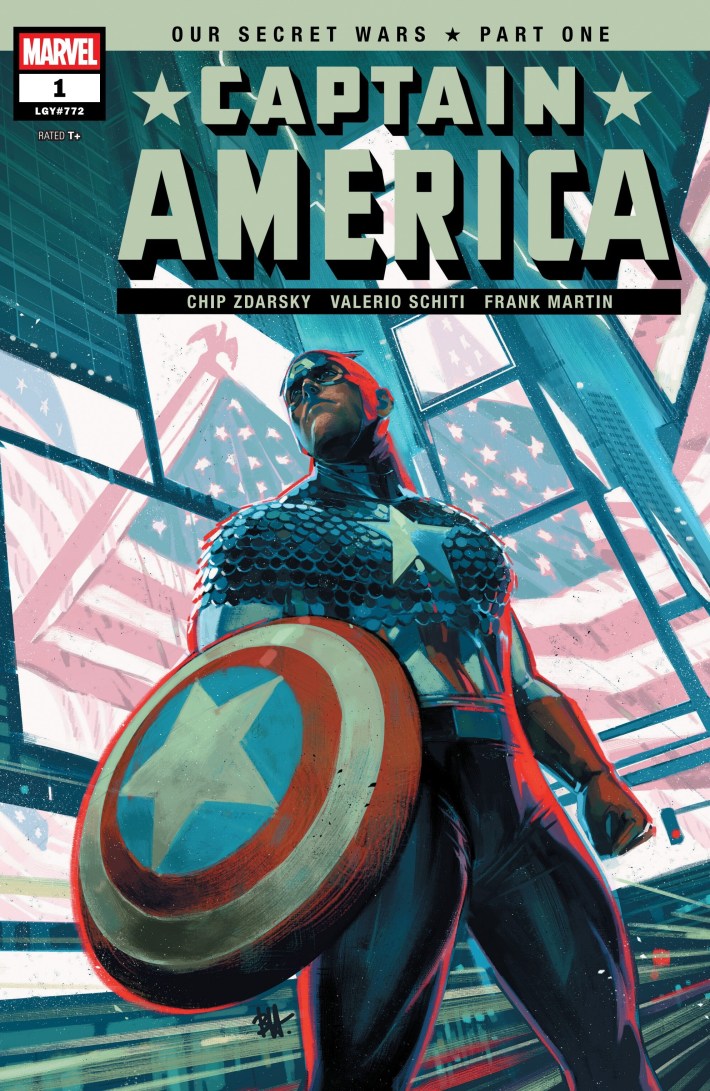
For the last few years, Captain America has existed in its own little corner of the Marvel Universe. The whole "Bucky = The Revolution" arc has really controlled the Cap-verse for a while, following the "Cap = Hydra" arc. It's been its own territory that plays by its own rules and doesn't abut the rest of the Marvel U all too much. And it was nice. It played up the political thriller/conspiracy aspects that served the property so well in the Captain America: The Winter Soldier film.
But now that Chip Zdarsky is running the title, it's a different ballgame. The era of "Cap vs. conspiracy" is over; now it's "Cap is, was, and has always been a soldier." To do this, he's taking us back to the past, just a few days after Steve Rogers was unfrozen from the Arctic ice that he was trapped in since WWII. There haven't been any secret wars, or Kree-Skrull wars, or evolutionary wars, or infinity wars. It's the early days of the modern Marvel Universe: the Avengers are still shiny and new, Iron Man hasn't revealed his identity to the public, and the Fantastic Four are just the friendly superheroes down the street. And Steve … well, the best he can do is pick up where he left off in 1945, keeping his Army career going.
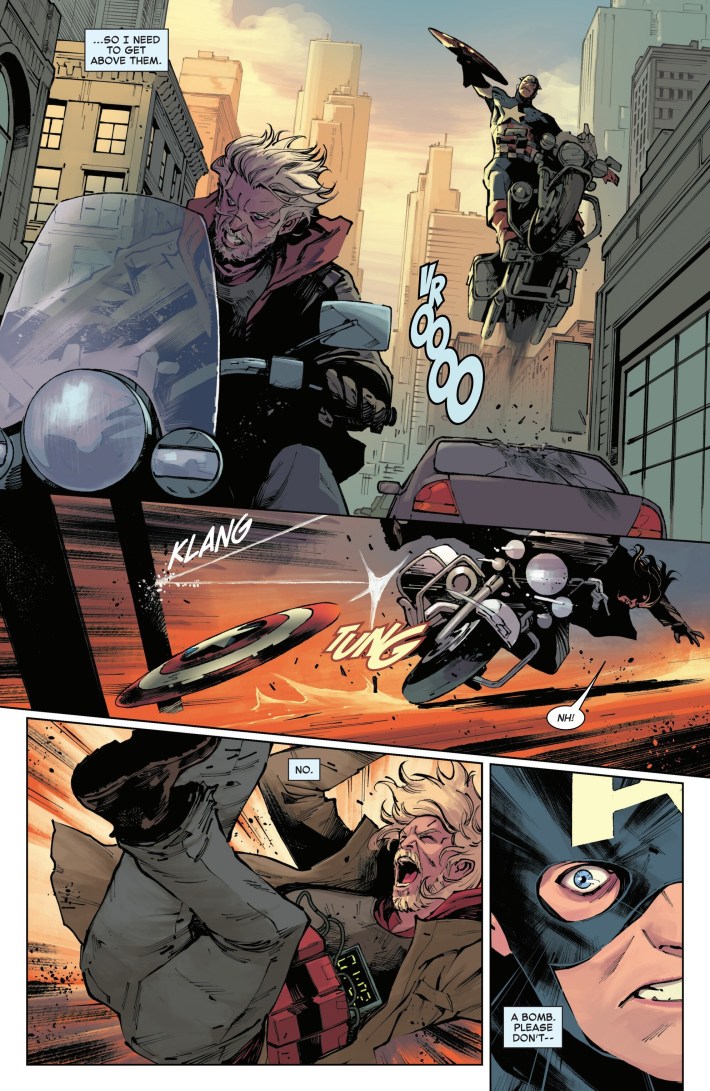
It feels good to shake that Captain America continuity for a while. Zdarsky lets Steve mingle with Tony Stark and battle the Mole Man with Mr. Fantastic without the decades of history that have passed. He's clearly part of the Marvel Universe but he's just stepping back into it after an indeterminable amount of time (the launch of the Starkphone places this closer to modern day than 1964's re-thawing of Cap). It feels like an old Marvel crossover, when it was still surprising to see Captain America pop up in The Fantastic Four, and not something that happens every month in one title or another.
There's some modern action as well, but it's far away from the current Marvel storylines. A young boy named David Colton witnesses 9/11 but isn't what the Army is looking for in the large recruitment drive that followed. We see him abused on base by his peers and his superiors, only to follow Steve Rogers' path by volunteering for another Super Soldier program. By the end of the issue he's a lost, forgotten Super Soldier for the post-9/11 age, carrying a shield like Cap's to watch the fall of Saddam Hussein in Iraq.
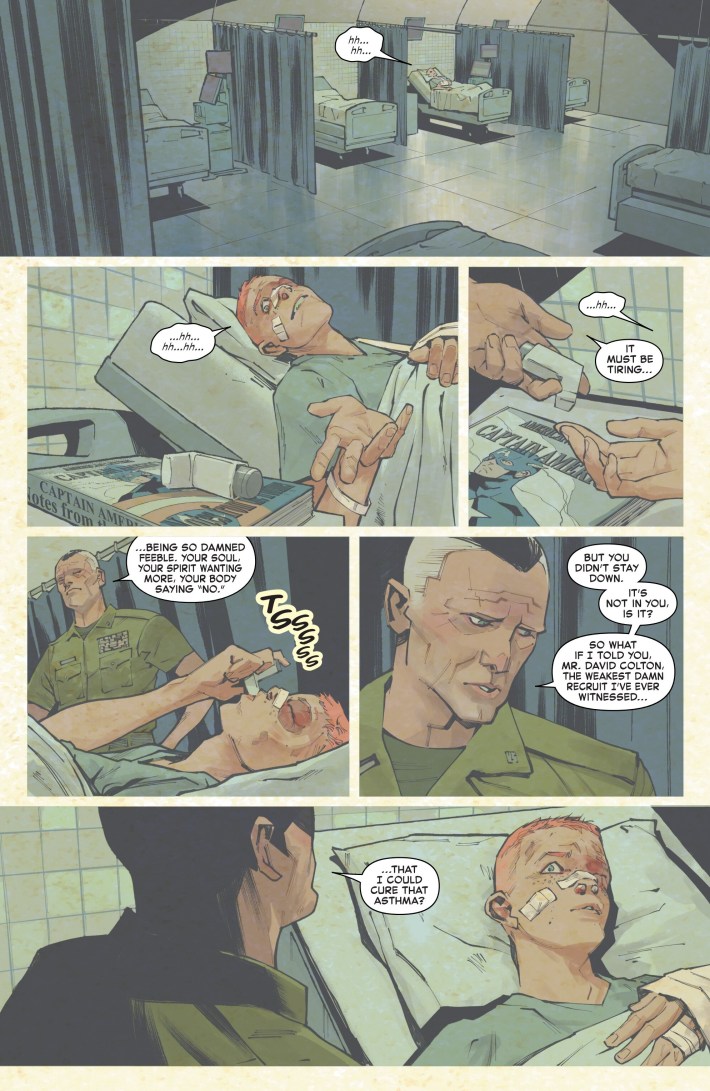
It's an origin for a new Cap that relies on the memories of the time as much as it does the actions of the characters. A large proportion of the readers of this new Cap book remember the years following the attack on the World Trade Center and the subsequent mess that was made in the Middle East in response. It's not a writing crutch at all, it's just activating our own experiences with how America (and Canada as well, since Zdarsky is proudly Canadian) explored every avenue to do something productive with all its rage. Make a new Super Soldier? Sure, America would have done that. It was all hands on deck post 9/11 and all ideas were on the table.
A restaurant down the street from me just this year stopped serving "Freedom Fries."
Zdarsky is clearly up to the challenge of writing an America character, I was just curious what his angle was going to be. It's not a "rah-rah America" book and it's not an exploration of the various political machinations that have gotten us to this point in history. No, it's an American tale that leans on the commonalities that all countries have: Army recruitment, basic training, misplaced machismo, post-9/11 scarring, insane political decisions, terrorist threats, and the simple, universal urge to do good for other people. Cap is at his rosy-cheeked best when he wants to help and relies on the one avenue he had to do that back in WWII: the US Army. How that's going to serve him as he goes to invade Dr. Doom's Latveria will play out in future issues.
I'll admit, I'm not the best person to comment on the art by Valerio Schiti. I like it, it serves the story well, but since I dropped out of art school I lack a lot of the vocabulary to do it justice. Half the book is action and half the book is talking and the action scenes look great and the talking scenes are pretty good, but they have to be tough when you've just drawn an intense motorcycle chase. It's the colors by Frank Martin that really take your breath away. They tell their own story, with Colton's backstory given appropriate patina until the last page when his Super Soldier stands out from the crowd. There's so much texture that comes out with the color choices that I'm including the page where I really noticed it.
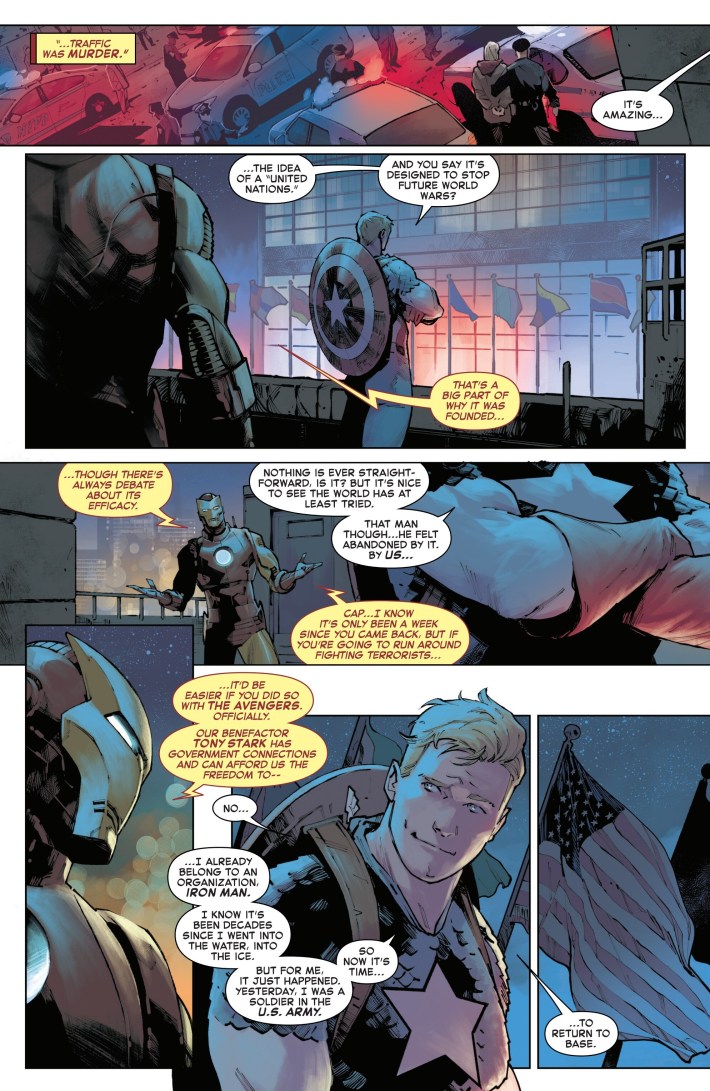
Seriously, there was no way this book was going to be a dud. It's a flagship Marvel title with a writer who's just coming off a championship run on the industry's (arguably) most visible book, Batman over at DC. It's not a victory lap. It's an application of craft and ingenuity that produces a top-tier comic at a time when it's appropriate to re-examine the period after an American/global crisis. It's a gamble that pays off, and I'm in it for every issue.
Integration in the Marvel Universe: 5/5
Action sequences: 4/5
New hero/villain: 3/5
Needed reflection on the years from 2001 to present: 5/5
Various world-ending crises: 0/5
Never forget: 9/11
Verdict: When a Captain America book reinvents itself, it's good to see where it's going. Not sure where it's going, but it's intriguing enough to follow where it's off to.



